By Chris Ciovacco
To Make Money Find Trending Investments
Based on the charts of most stock markets above, the trends will have to change before long-term investors can again make money. If a trend has to be in your favor to make money, then you should overweight investments which are doing just that. The inverse Financial ETF above fits the bill. Let’s see what other markets are in clearly defined trends.
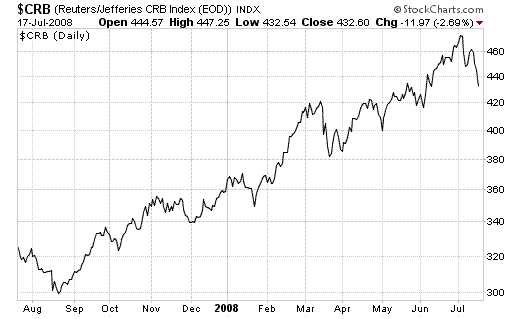
Commodities are experiencing a long-overdue correction as I type. Based on past corrections above, within the context of the ongoing uptrend, the current correction is not yet alarming (in physical commodities – stocks are more of a concern). However, you should watch the situation closely due to the slowing global economy and recent run-ups in prices. The commodity bull-run will end some day, but we don’t need to call a top. We can wait for evidence to mount which supports the probability of a trend reversal. Look at the sharp correction which occurred in March of this year. The press and many professionals called a top in commodities for the countless time during this bull-run. The gain from the March bottom is significant. Please do not interpret these comments as bullish. A top will come – it may be happening right now – but even if this is “the top”, in the long run in order to stay with profitable trends, you are better off waiting for more evidence prior to giving up on commodities. We may be wrong doing so now, but over time and over many instances we will be right more often than not, which is an important concept in the process of making money. One way to help take some emotion out of the decision making process is to make consistent decisions based on specific criteria. You evaluate the decision based on its merits rather than on the outcome. In the markets, to make money we know we can still be wrong on some decisions as long as we do not let the losses run too far. Risk control, which includes cutting losses, is important in all markets, including commodities. Moving on to other markets or investments which are currently trending favorably:
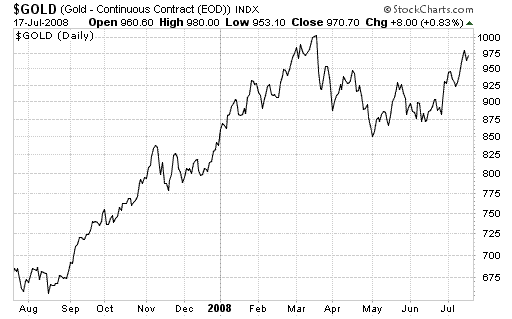

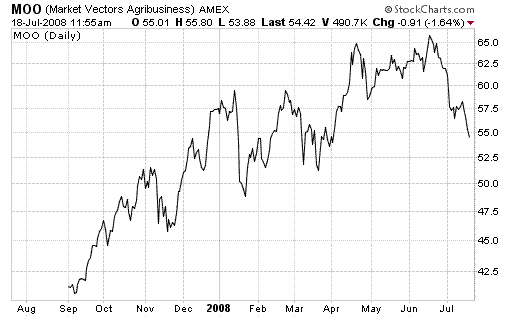
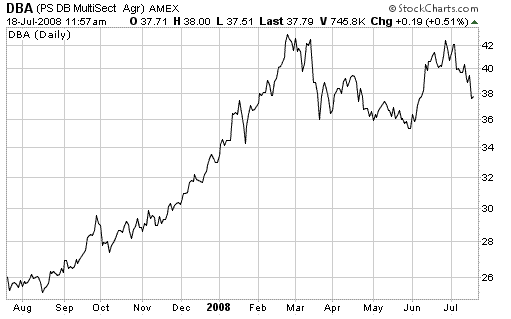
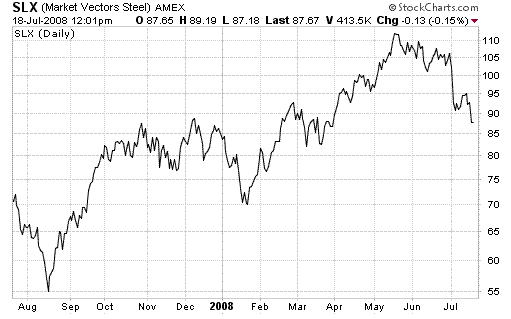

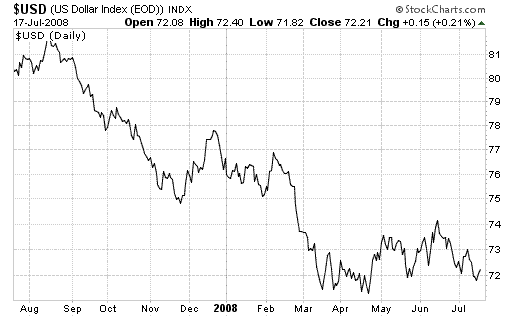
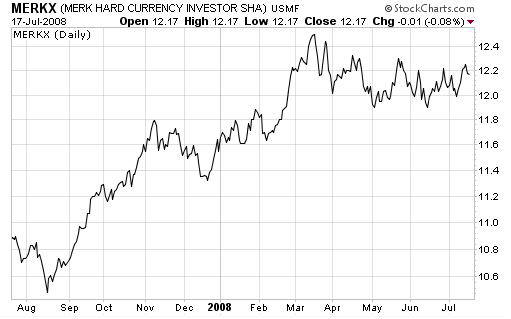
You may have noticed that all the up trending markets are commodity related or weak dollar related. Since commodities have a strong correlation to a weak dollar it is obviously a concern in terms of portfolio risk. In recent months we have continually searched for other alternatives with very limited success.
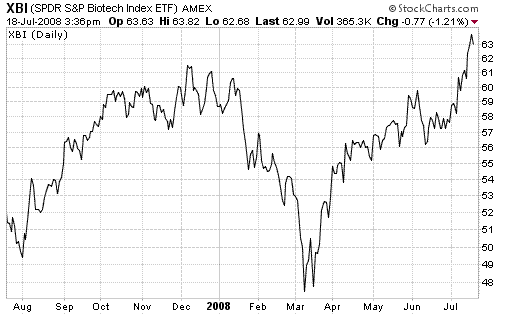
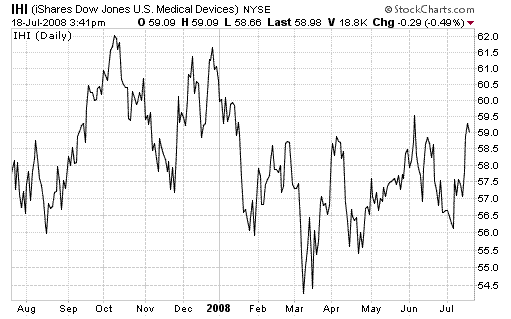
Since there are very few markets trending upward, the inverse funds of downward trending markets offer some alternatives to commodity and weak dollar plays. Shorting and inverse investments should be managed by experienced investors or experienced professionals due to their high volatility and rapid price moves.
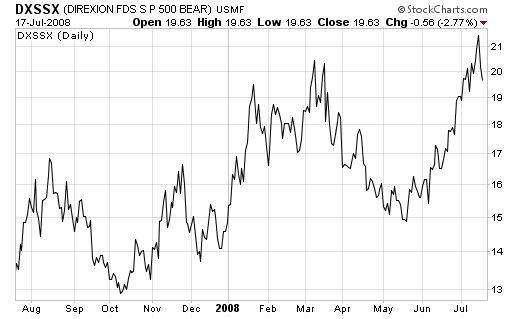
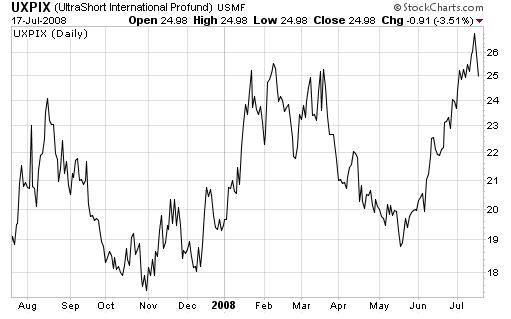
In an attempt to provide some diversification to counterbalance the commodity and weak dollar plays, we also have other somewhat attractive investment options.
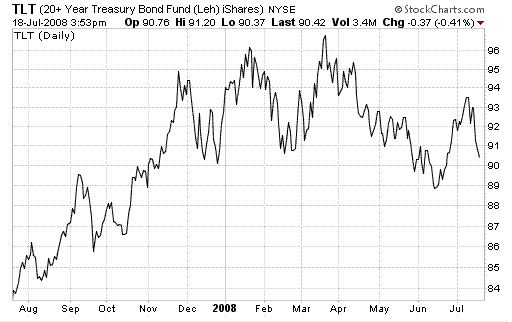

Investment Correlations to Inflation (CPI) Point Toward Higher Inflation
In a recent analysis conducted by PIMCO and Morgan Stanley which explored the correlation of S&P 500 Industry Groups to inflation (CPI) from 1975-2007, the groups with positive correlations to inflation (CPI) were quite limited in scope. Only energy, media, healthcare equipment & services, transportation, materials, utilities, and food & staples, were able to post positive returns as inflation rose. The remaining fourteen industry groups including diversified financials, banks, tech hardware & equipment, and telecom services all were losing bets during periods of rising inflation. If you look at the positive trending charts above, it is quite clear history is repeating itself. It is interesting to note, the S&P 500 as a whole posted a strong negative correlation to the CPI from 1975-2007, which means if inflation continues to pick up steam, stocks will be fighting an ongoing historical headwind.
A Word about Position Sizing Within the Context of the Entire Portfolio
Investors will be well served in the current environment to more closely monitor their portfolio as a whole, rather than isolating more volatile components such as gold (GLD) or financial stocks (SKF). If the percent allocation or size of the position is small or within reasonable bounds relative to the balance of the portfolio, the risk of volatility has been properly accounted for. For example, if your allocation to physical gold is 5% of your entire portfolio, including CDs and money markets, a 20% fall in the price of gold will only cause a 1% decline of your total holdings. A 1% decline is much easier to stomach than a 20% decline.
Housing, Fannie & Freddie, and Financial Stocks
You often hear defenders of Fannie and Freddie’s say, “Most of their mortgages are 30-year fixed and not delinquent.” That is somewhat accurate, but leaves out the ongoing damage to their balance sheet as housing prices continue to fall. You can make all the payments you want on time and that has no effect in terms of the blow to the value of their mortgages which results when the underlying assets, single family homes, drop in price. The text below, concerning Fannie and Freddie, is from the Wall Street Journal dated Friday, July 18, 2008:
The two companies – which are rivals in the same business – have reported a combined $11 billion of losses over the past three quarters, largely because of increasing defaults by homeowners on mortgages. When homeowners don’t make mortgage payments, Fannie and Freddie must reimburse the holders of securities backed by those defaulting mortgages. At the same time, falling home prices cut the value of the collateral backing the loans, increasing losses for Fannie and Freddie. Investors and analysts can only guess how bad the losses might be as several million American homes go through foreclosure. Analysts at Goldman Sachs Group Inc. this week estimated that Fannie faces default-related losses of $32 billion and Freddie $21 billion.
As far as banks, and to a lesser extent the financial markets as a whole go, nothing is more important than falling home prices. Until home prices at least show some real signs of stabilization, all bullish bets or calls for a bottom in stocks should be made cautiously. In my view we cannot even begin to think about stabilization in home prices until the inventory of unsold homes comes back in line with historical norms. The basic laws of supply and demand are still out of balance. Currently, there are somewhere in the neighborhood of eleven months of supply of unsold homes on the market versus a six to seven month supply we would expect to see in a more healthy market for price appreciation. When this gap begins to close, it will be more reasonable to consider lasting rebounds for the economy and stocks.
How Are Value Investors Doing In The Current Environment?
Rather than try to pick on anyone in a tough environment, my purpose here is to demonstrate the limited number of places to seek investment gains in the last year. As most of us know, the king of value investing is Warren Buffet. Historically value investors, who buy companies based mainly on their value as a business, have fared relatively well in bear markets. Even Mr. Buffet’s Berkshire Hathaway has not been immune to the bear.
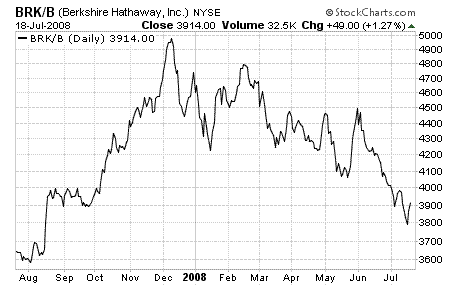
A Tough Environment: Inflation Is Rising, Equity Markets Are Falling, and Commodities Correcting
As a portfolio manager, options in the current environment are somewhat limited. We have no particular fascination with commodities, they just happen to be the only source of strength. We would much prefer never to use inverse funds, but a 100% commodity portfolio is not prudent. Global inflation is on the verge of getting away from central bankers, which means investors who wish to protect their long-term purchasing power cannot afford to park funds exclusively in CDs and money markets. Our approach will continue to use a mix of multiple asset classes in an effort to grow and protect principal within the context of volatile and increasingly interfered with markets. While in an environment where the source of strength is basically limited to commodities and inverse or bear market vehicles, we have to tread with extra care. We are willing to give investments a reasonable amount of rope on the downside based on recent volatility characteristics. However, a continued pullback in commodities could quickly morph into rapidly falling prices. In that event, principal protection must become the primary focus in order to preserve capital to fight another day.
While some shortsighted stock investors see an opportunity in stocks based primarily on a possible correction in commodity prices, they should not ignore the fact that continued global economic deterioration is the driver behind falling commodity prices. This serves as another reason to be skeptical of what appear to be textbook bear market rallies. The markets and economy would be better served if the Feds backed off on the tinkering and just let the markets deal with those who made poor decisions in the form of overbuilding, real estate speculation, securitization, and a general lack of managerial oversight and discipline. Recessions do many things to help the economy move closer to a sustainable recovery including the all important purging of bad debt from the system. Unfortunately, we will most likely see just the opposite from the Feds in the form of continued “unprecedented” intervention into what is inaccurately described as a free market economy. In the end, all the tinkering will simply prolong the recovery process. As always, if we keep an open mind (recognizing things may not unfold as described above) and pay attention to what is actually happening versus being concerned with what may happen, the markets will guide our asset allocations if we are willing to follow.
